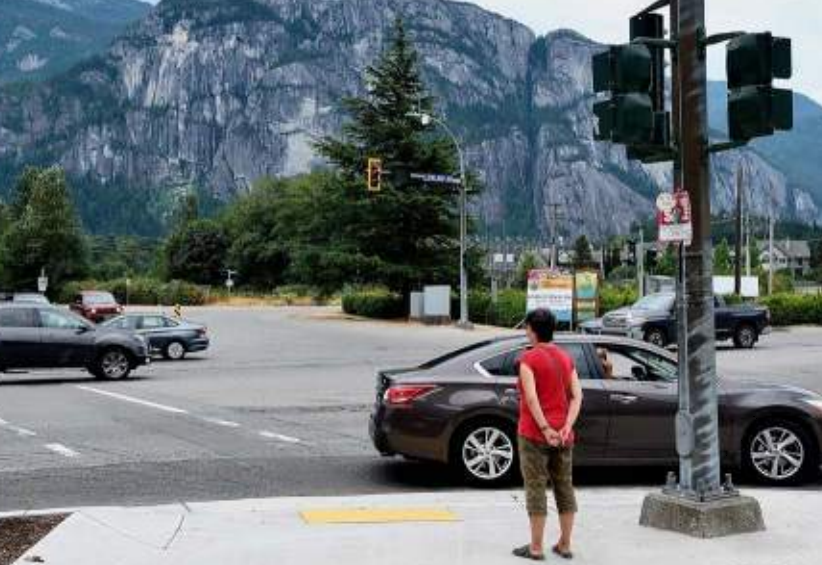
The District of Squamish is developing a plan to prohibit right turns on red lights at three key intersections. As part of its comprehensive Transportation Master Plan, the District intends to introduce a ‘No Right Turn on Red’ policy at these traffic signals to enhance safety for all road users.
Sign up for local news alerts from Squamish Reporter
The three intersections where the policy will apply are:
Cleveland Avenue/Buckley Avenue/Hunter Place
Cleveland Avenue/Pemberton Avenue
Mamquam Road/Glenalder Place
According to the plan, “The ‘No Right Turn on Red’ rule improves safety and accessibility for vulnerable road users by preventing drivers from inching forward into the crosswalk to find a gap in traffic, which often blocks access to curb ramps. Additionally, as drivers typically focus on looking left for oncoming vehicles, they may overlook pedestrians or cyclists approaching from the right.”
Dora Gunn, the District’s Transportation Planner, explained that this policy is part of a broader strategy to improve accessibility for all road users. “It’s one of several actions in the plan to make it easier for people to walk, bike, and take transit,” she said.
Data from ICBC shows that the intersection of Buckley Avenue, Cleveland Avenue, and Hunter Place experienced 53 crashes, followed by Commercial Way and Discovery Way (25), Cleveland Avenue and Pemberton Avenue (24), and Glenalder Place and Mamquam Road (19).
In addition to this new policy, the District plans to explore methods for prioritizing pedestrians and cyclists at traffic signals. “Collisions between turning vehicles and pedestrians or cyclists often occur where they share the roadway. By giving pedestrians a head start with an exclusive walk signal, we reduce conflicts and improve driver awareness, resulting in a safer system, even if it means a slight increase in vehicle delays,” the plan outlines.
The District is also studying the possibility of reducing posted speed limits on local roads. Gunn explained that while the default speed limit on municipal roads is set at 50 kilometers per hour by the Province, local governments have the authority to lower these limits. “We have a project where we are looking at the 50-kilometer default speed limits and seeing if that works for us in the community. We can change that number,” Gunn said.

Other planned safety improvements include:
- Reviewing the ‘Stop as Yield’ condition for bicycles: Commonly known as the Idaho Stop, this minor adjustment would allow cyclists to slow down and roll through stop signs, rather than coming to a full stop. The District is considering legalizing this practice through a bylaw update to align with typical cycling behaviors.
- Adding “Elephant’s Feet” to legitimize bicycle crossings: ‘Elephant’s feet’ are road markings that indicate areas where cyclists can cross without dismounting. The District plans to incorporate these markings into bylaws, similar to measures adopted by other municipalities.
- Enhancing school zones for safety: While the District has already reduced the speed limit in school zones to 30 km/h and introduced centerline calming measures, further improvements could include decorative crosswalks and additional traffic-calming devices like speed humps and raised intersections.
- Conducting a road safety network screening review: The District will analyze the latest ICBC crash data to identify high-collision locations and determine possible causes and countermeasures. This review will follow the principles of the ‘safe system’ approach to support the proposed adoption of a Vision Zero Strategy, which aims to eliminate traffic-related fatalities and severe injuries.






Kenneth R Trethewey says
suck